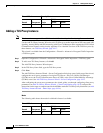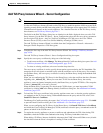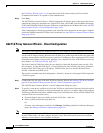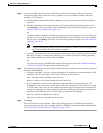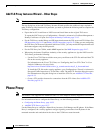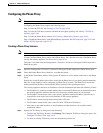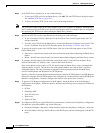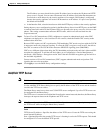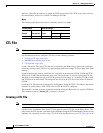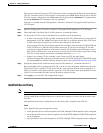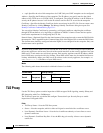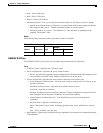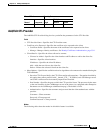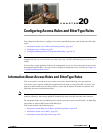
19-28
Cisco ASDM User Guide
OL-16647-01
Chapter 19 Adding Global Objects
CTL File
Interface—Specifies the interface on which the TFTP server resides. The TFTP server must reside on
the same interface as the Cisco Unified Call Manager (CUCM).
Modes
The following table shows the modes in which this feature is available:
CTL File
Note This feature is not supported for ASDM version 6.1.5 or the Adaptive Security Appliance version 8.1.2.
For information on how to configure CTL files, see the following sections:
• Creating a CTL File, page 19-28
• Add/Edit Record Entry, page 19-29
• CTL Provider, page 19-32
Create a Certificate Trust List (CTL) file that is required by the Phone Proxy. Specify the certificates
needed by creating a new CTL file or by specifying the path of an exiting CTL file to parse from Flash
memory.
Create trustpoints and generate certificates for each entity in the network (CUCM, CUCM and TFTP,
TFTP server, CAPF) that the IP phones must trust. The certificates are used in creating the CTL file.
You need to create trustpoints for each CUCM (primary and secondary if a secondary CUCM is used)
and TFTP server in the network. The trustpoints need to be in the CTL file for the phones to trust the
CUCM.
Create the CTL File that will be presented to the IP phones during the TFTP. The address must be the
translated or global address of the TFTP server or CUCM if NAT is configured.
When the file is created, it creates an internal trustpoint used by the Phone Proxy to sign the TFTP files.
The trustpoint is named _internal_PP_ctl-instance_filename.
Creating a CTL File
Note This feature is not supported for ASDM version 6.1.5 or the Adaptive Security Appliance version 8.1.2.
Use the Create a Certificate Trust List (CTL) File pane to create a CTL file for the Phone Proxy. This
pane creates the CTL file that is presented to the IP phones during the TFTP handshake with the security
appliance. For a detailed overview of the CTL file used by the Phone Proxy, see CTL File, page 19-28.
Firewall Mode Security Context
Routed Transparent Single
Multiple
Context System
• — • ——



